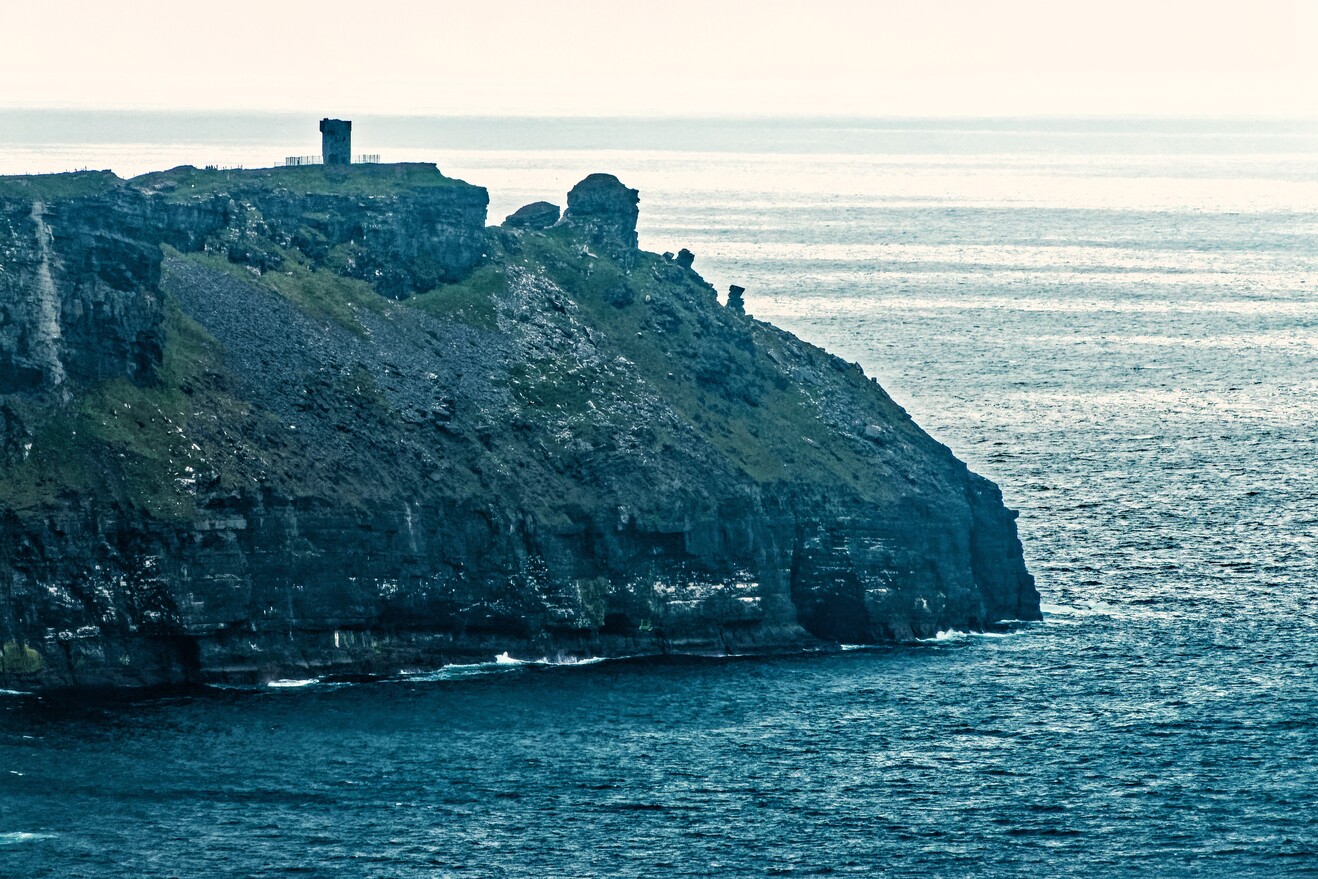The water depth at the Cliffs of Moher is a subject of intrigue for many visitors. While exact measurements are not widely documented, the cliffs’ dramatic drop into the Atlantic Ocean suggests significant depths. The underwater landscape is shaped by ongoing coastal erosion, creating diverse features like sea caves and stacks. This article explores what we know about the water depths, underwater topography, and marine life at this iconic Irish landmark.
What is the General Water Depth at the Cliffs of Moher?

The Cliffs of Moher, standing majestically on Ireland’s west coast, plunge dramatically into the Atlantic Ocean. While precise depth measurements are not readily available, several factors indicate substantial water depths:
- Steep cliff face: The cliffs rise to heights of up to 214 meters (702 feet), suggesting a sharp drop-off into deep waters.
- Atlantic Ocean location: The cliffs’ position on the open Atlantic coast implies significant depths offshore.
- Marine life: The presence of large sea creatures like whales and basking sharks indicates deep waters in the vicinity.
It’s important to note that the depth likely varies along the 14-kilometer stretch of the cliffs. Near-shore areas may be shallower, while depths increase further from the coast.
How Does Coastal Erosion Affect Water Depth?

Coastal erosion plays a crucial role in shaping both the cliffs and the underwater landscape:
- Wave action: Constant battering by waves erodes the cliff base, potentially increasing water depth over time.
- Sediment transport: Eroded material may be carried away by currents, contributing to depth changes.
- Formation of underwater features: Erosion creates sea caves, arches, and stacks, altering the seafloor topography.
The erosion process is ongoing, meaning that water depths and underwater features are in a constant state of flux.
What Underwater Features Exist Near the Cliffs?
The area around the Cliffs of Moher boasts a variety of underwater features:
- Sea caves: Formed by wave action eroding softer rock layers.
- Sea stacks: Isolated pillars of rock, like the 67-meter Branaunmore stack.
- Submerged platforms: Remnants of eroded cliff bases.
- Rocky outcrops: Providing habitats for marine life.
These features contribute to the complex underwater topography and influence local water depths.
How Does Marine Life Indicate Water Depth?
The rich marine ecosystem around the Cliffs of Moher offers clues about water depth:
| Marine Species | Depth Indication |
|---|---|
| Grey seals | Can dive to depths of 100+ meters |
| Dolphins | Often found in waters 50-200 meters deep |
| Minke whales | Typically inhabit waters 100-200 meters deep |
| Basking sharks | Known to dive to depths of 1000+ meters |
The presence of these species suggests that the waters off the Cliffs of Moher reach considerable depths, at least in some areas.
What Challenges Exist in Measuring Water Depth at the Cliffs?
Several factors make accurate depth measurements challenging:
- Dangerous conditions: Strong currents and high waves make close approaches risky.
- Varied topography: The underwater landscape likely includes steep drop-offs and irregular features.
- Changing depths: Erosion and sediment movement cause ongoing changes to the seafloor.
- Limited access: The cliffs’ height and instability restrict measurement from land.
These challenges contribute to the lack of widely available, precise depth data for the area.
How Do Tides Affect Water Depth at the Cliffs of Moher?
Tidal variations play a significant role in water depths around the cliffs:
- Tidal range: The area experiences a tidal range of approximately 3-4 meters.
- Exposed areas: At low tide, some near-shore features may become visible.
- Depth fluctuations: Tides cause daily changes in water depth, particularly in shallower areas.
Visitors should be aware that water depths can change significantly throughout the day due to tidal influences.
What Role Does Geology Play in Water Depth?
The geological composition of the Cliffs of Moher influences water depth and underwater features:
- Rock types: The cliffs consist of alternating layers of shale and sandstone.
- Erosion rates: Softer layers erode faster, creating overhangs and caves.
- Fault lines: Geological faults may contribute to underwater canyons or steep drop-offs.
- Sediment accumulation: Eroded material may form underwater banks or slopes.
Understanding the geology helps explain the complex underwater topography and varying depths in the area.
How Do Currents Impact Water Depth Perception?
Strong currents around the Cliffs of Moher can affect how water depth is perceived:
- Surface turbulence: Rough seas can make the water appear shallower than it is.
- Underwater visibility: Currents stirring up sediment can limit visibility, making depth estimation difficult.
- Wave patterns: Large waves can create the illusion of shallower water.
These factors highlight the importance of not relying on visual estimates of water depth in this area.
What Safety Considerations Relate to Water Depth at the Cliffs?
The significant water depths and challenging conditions at the Cliffs of Moher pose several safety concerns:
- No swimming areas: The deep water and strong currents make swimming extremely dangerous.
- Boat safety: Small vessels should maintain a safe distance from the cliffs due to unpredictable depths and underwater hazards.
- Cliff edge precautions: Visitors should stay behind safety barriers to avoid falls into deep water.
- Rescue challenges: The combination of high cliffs and deep water complicates rescue operations.
Understanding these risks is crucial for visitors to safely enjoy the spectacular views from the cliffs.
How Can Visitors Learn More About Water Depths at the Cliffs?
While exact depth measurements may not be available, visitors can gain insights into the underwater environment:
- Visitor center exhibits: The Cliffs of Moher Visitor Experience offers information on local geology and marine life.
- Guided tours: Some tours provide details on the cliffs’ formation and underwater features.
- Marine wildlife watching: Observing sea life can offer clues about water depths in different areas.
- Local knowledge: Engaging with local guides or fishermen may provide anecdotal information about water depths.
These resources can help visitors appreciate the complex underwater landscape beneath the towering cliffs.
In conclusion, while precise measurements of water depth at the Cliffs of Moher are not widely available, various factors indicate significant depths in many areas. The combination of steep cliffs, ongoing erosion, diverse marine life, and challenging measurement conditions contributes to the mystery surrounding exact depths. Visitors can appreciate the power and depth of the Atlantic Ocean from the safety of the cliff-top viewpoints, marveling at the interplay between land and sea that has shaped this iconic Irish landmark over millions of years.
References:
1. Cliffs of Moher – Wikipedia
2. Cliffs Of Moher | The Burren and Cliffs of Moher UNESCO Global Geopark
3. The Cliffs of Moher • Visitor Guide 2024 • Geology & Wildlife – Tuatha
